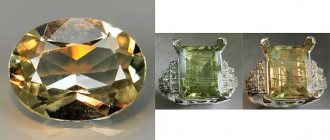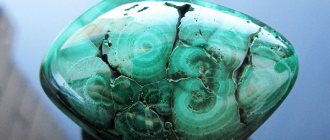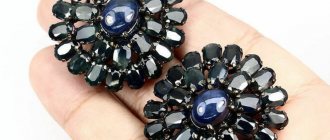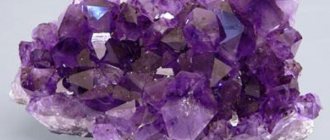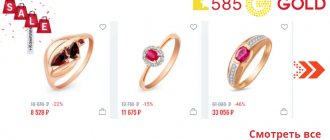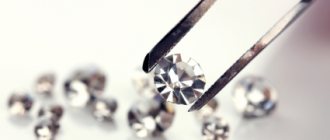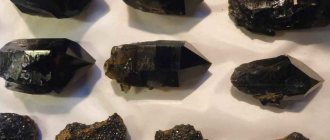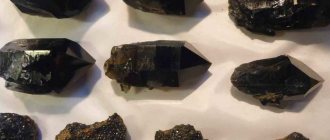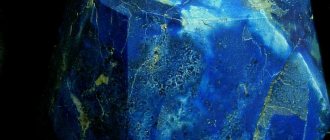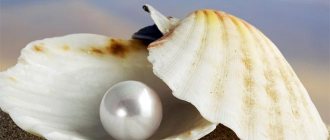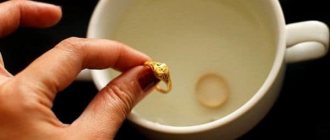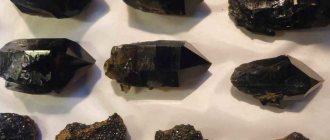Story
Thousands of years ago, pink topaz was used to make jewelry and household items, but in its raw form it attracted attention. In Europe, the mineral gained popularity during the Renaissance, when master jewelers introduced faceted crystals to society.
The history of refined pink topaz began with an accident. The wife of a Ural jeweler was baking bread and an earring with yellow topaz accidentally fell into the dough. The decoration was discovered after the finished baked goods were served. What came as a surprise to everyone was that the stone turned deep pink after being in the oven.
As an experiment, the Ural jeweler put plain-colored topazes into the oven, which eventually acquired a beautiful pink color. This discovery brought wealth and fame to the master, and the basis of the topaz refining technique is still used today.
Swarovski crystal making technique
The company keeps the method of manufacturing its products in the strictest confidence. What are these natural diamond analogues made of? Initially, the stones, mesmerizing with their beauty, were made from lead oxide. However, in 2012, the company managed to create a special chemical formula that excludes the presence of this element in its products, which, due to its toxic properties, does not benefit the human body.
The 16-sided processing gives the crystals incredible shine. Thanks to particularly careful grinding, a perfectly smooth surface and clear corners of the stones are achieved. After this procedure, the products are necessarily checked for chips and scratches, and if even the slightest defects are detected, they are rejected.
During the production process, the company uses a special coating. With its help, incredibly beautiful shimmer, light smokiness or a certain shade are achieved on the surface of products. In addition, by covering the stones with a special composition, the manufacturer prevents loss of shine, as well as the negative effects of dust and other contaminants throughout the entire service life.
Properties of the mineral
Pink topaz (Pink topaz) 0.31 carats
Pink topaz in chemical composition is aluminum fluorosilicate. The color scheme is formed by impurities, which include chromium, iron, and titanium. The depth of formation of the rock affects the saturation of the shade. The deeper the mineral lies, the thicker and more saturated its color.
Pink topaz has a high hardness rating of 8 on the Mohs scale and a density of up to 3.57 g/cm³. The gem is transparent with a glassy sheen, conchoidal fracture and perfect cleavage.
The pink gem is susceptible to ultraviolet radiation, due to which it loses its natural shade. To fix the color and preserve the beauty of the stone for a longer period, it can be refined - heat treated. Exposure to high temperature can correct the shade and make it more saturated.
Blue topaz, or the dream of every beautiful lady
According to legend, topazes were first discovered on the uninhabited island of Topazios (now Zeberget), which is located in the Red Sea. Other versions of the origin of the name of this stone refer us either to the Sanskrit “tapas”, which means “warmth”, or to the Greek “topazos”, translated as “search”. Due to its high specific gravity, Ural miners nicknamed topaz “heavyweight,” and European jewelers for a long time called this stone “Siberian diamond.”
Topaz is an aluminum fluorosilicate, which is a very hard mineral and is second only to diamonds in this respect. It is difficult to process, but the result is worth it - after cutting, topazes acquire a glassy sheen, characteristic of diamonds.
Since ancient times, topaz has been attributed a lot of various properties: from mystical to medicinal. During the period of geographical discoveries, blue topaz served as a talisman for sailors for centuries - it was believed that it was able to pacify the raging elements and lead lost travelers to a calm harbor, so many sailors always took a ring with topaz with them. This blue stone helps stop bad dreams or insomnia, and suggests the right solution to pressing problems. Topaz is also believed to energize the intellect, ignite passion, reduce fear, and also enhance premonitions. Owners are recommended to wear it on the index finger of the right hand, preferably in a silver ring or as a pendant around the neck.
The “Topaz Wedding” is the name given to the sixteenth wedding anniversary. On this day, many spouses give each other jewelry with topaz, symbolizing the strength of the relationship and its purity.
Topaz is highly prized for its beauty and enchanting blue color, but what many of us don't realize is that topaz comes in a variety of colors and shades - ranging from brown to wine yellow, golden to red, smoky to blue and pale green - this A stone acquires its color not through any impurities, but through its own structure. Of particular value are polychrome crystals, in which the layers are painted in different colors, as well as stones with a “cat’s eye” effect.
Despite all this variety of shades of topazes that can be found in nature, even in antiquity, craftsmen changed the natural color of topazes by firing them in quartz sand. But modern technology makes it possible to create different shades of stones through the cultivation process. Special processing allows you to reveal the natural shade of natural stone and preserve it for a long time.
Take blue topaz for example. The most common among them is Sky Blue Topaz - these topazes are very similar to aquamarine.
Darker Topaz is quite rare in nature. This beautiful shade of topaz is obtained through cultivation.
The brightest crystals are London Blue Topaz, which are the most processed, as they are very rare in nature.
But despite all the technology and reliability of the refining process, it is recommended to store topazes away from light and heat sources - under their influence the stones may lose their color.
Fashion trends
Marine motifs, to which the clear, azure shades of topaz refer us, have been inspiring jewelry designers for many years now. Every season, jewelry brands delight topaz lovers with their elegant new items. The trend this winter is the combination of deep shine of topaz framed in white gold or silver. Volumetric jewelry with a large stone in the “main roles” does not lose its relevance. Blue-hued topazes are easily combined with other semi-precious stones, which gives topaz many benefits. Jewelry with this enchanting blue stone rightfully takes a place in the jewelry boxes of many celebrities. Charlize Theron, Kylie Minogue, Audrey Tattoo, Madonna, Pink and Victoria Beckham regularly delight us with their jewelry with topaz.
www.livemaster.ru
Colors and varieties
Pink topaz, depending on the color and deposit of calves, is divided into several varieties:
- Topaz-imperial. The most expensive variety of this mineral has a wide range of shades. It comes in pink rose, lotus, raspberry, cranberry, salmon, purple and red-orange colors. Brazil is considered the birthplace of imperial topaz, but stones of this variety are also supplied by Pakistan and Sri Lanka.
Topaz-Imperial 6.22 ct
- Red topaz. The rarest type of mineral that cannot be refined. When you try to heat treat the stone becomes cloudy. Due to the impossibility of counterfeiting the color, red topaz is highly prized by jewelers and gem lovers.
Red Topaz
- Peach topaz. Absolutely transparent crystals are in demand among jewelers.
Peach topaz 19.51 carats
- Orange-pink topaz with a champagne tint. The stone is cheaper compared to other varieties, but is no less interesting and in demand among jewelers.
Natural champagne topaz 6.74 carats
Misty Rose gems created by Swarovski can also be considered a variety of pink topaz. Crystals are characterized by a milky pink color with a varied tint of powdery shades.
Manufactured products
For the middle class of consumers, the Swarovski company produces jewelry with inexpensive but impressively sparkling crystals. Products for the home are popular in the market. These are elegant chandeliers with pendants, original lamps, furniture in combinations of leather, wood and stones.
Souvenir products also deserve attention, for example, decorative crystal figurines, where there is a variety of colors, modern effects with the play of rays and a variety of coatings. Also in use are exclusive buttons for designer items, adhesive and sew-on rhinestones, and beads for decorating clothes and shoes.
Assortment of precious stones
One of the company's activities is the cutting of precious stones. And if the head office is located in the Austrian city of Wattens, then the production facilities for processing expensive crystals are concentrated in Schwaz (Tyrolian lands). This subsidiary of Swarovski has been established since 1950.
Among the running stones that are subjected to special cutting:
- sapphire;
- topaz;
- amethyst;
- citrine.
These are the most common gemstones that craftsmen work with. Moreover, both natural stones and synthetic crystals are processed.
Synthetic leaders
Among artificial ones, the leading positions are occupied by:
- zirconium (in Russia called cubic zirconia);
- synthetic spinel and topaz;
- corundum (French rose);
- alpinite (potassium-calcium glass with aluminosilicates, created by Swarovski).
These stones also use high-precision cutting, which was previously used only for diamonds. Swarovski masters were the first to try this method on artificial crystals and obtained excellent results.
It all starts with color
For example, consider the processing of synthetic topaz. Let us immediately note that topaz grown by Swarovski is a natural stone in all respects; it simply grew under human control. Therefore, everything that happens to it during subsequent processing also applies to any natural mineral.
The initial color of synthetic topaz is white (colorless). The stone is painted using special pigments. The technology is kept secret.
Personnel turnover in production is reduced to zero, which is why the secret of processing Swarovski stones has not yet spread beyond the company. Only the number of shades is known - there are 20 of them, which gives masters room for imagination when creating color compositions.
Cut markings
Swarovski stones are cut using high-precision equipment. This is know-how that allows you to cut very small crystals. The shapes remain traditional diamond. In addition to classic ovals, circles and rectangles, awnings and drops are made.
For each stone that has received such treatment, the Swarovski inscription is placed on the site using a laser. Topaz with similar markings can be found in any country.
Bluestone is usually framed in silver or other white metal. Pink Swarovski crystals look good in gold.
Where does the glow come from?
The brilliant shine of Swarovski crystals, similar to diamonds, is created by adding lead oxide to the composition. The resulting stones are flawless in appearance. They have won the hearts of jewelry lovers and few people think about the fact that a special sparkle is created by applying foil coating on the inside.
The main thing is that the result exceeded all the expectations of both chemists and connoisseurs of the precious radiance of stones. And now Swarovski “diamonds” have become available even to those fashionistas who belong to the middle class in terms of financial wealth.
Swarovski specialists achieve visible optical effects in stone through color, unusual cutting techniques, and variations in shapes and sizes.
Effects
To create an iridescent shine on a polished crystal, a coating is applied, which is abbreviated as AB. These two Latin letters encrypt the name “Aurora’s radiance”. After all, Aurora was considered the goddess of the dawn by the ancient Latins. She brought daylight. But, according to Roman mythology, all the stars in the sky came from her.
Metallic effects are called Aurum - imitates gold and Silver, giving the shine of silver. Swarovski craftsmen have more than 80 color shades and almost 30 different shine options.
Recently, the number of possible cuts of stones has also increased. Swarovski rhinestones called Xirius are introduced to the jewelry world. They have 17 facets and glow like real stars.
Place of Birth
Pink topaz is considered a rare stone; there are not so many deposits of it on the planet.
In Russia, significant deposits are located in Transbaikalia. Pink specimens are found in the central part of the Chelyabinsk region in the coastal zone of the Kamenka and Sanarka rivers. High-quality stones of pink, crimson and purple colors were mined in the Southern Urals (Kochkarsky mine), but this deposit has already been developed.
Pink topaz is mined in Brazil near the city of Ouro Preto. This area is famous for its pink topaz crystals.
Pakistan, India, and Sri Lanka are also famous for their deposits of gems. Stones of pale pink and red colors are found in Ukraine in the Volyn region.
